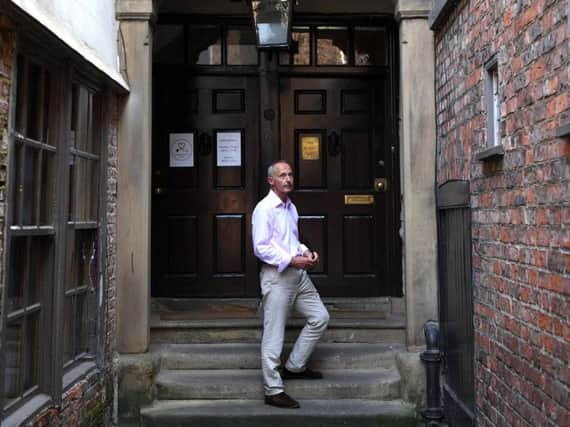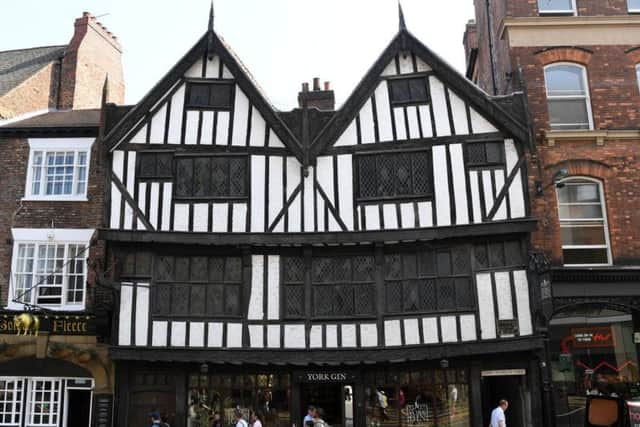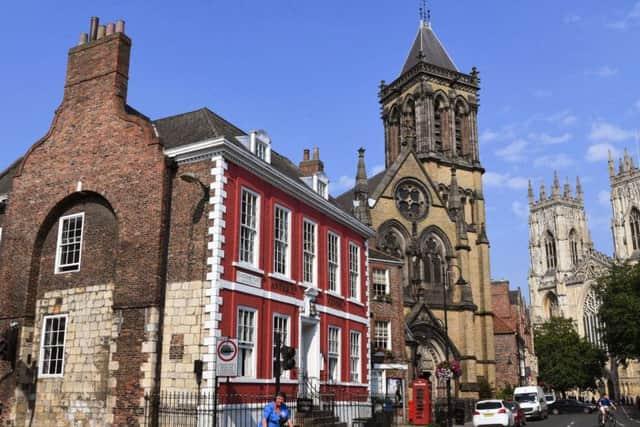The York trust working to conserve the city's historic buildings


More than seven million people visit York every year. The last time that figures were published, they spent well over £600m during their stay. Very few of them will have heard of the York Conservation Trust (YCT), yet most of them will have walked past a building owned by this unique institution, and a lot will have been inside one.
For the YCT doesn’t just own a handful of historic properties within the city’s walls, its properties number just short of the hundred mark.
Advertisement
Hide AdAdvertisement
Hide AdSlowly but surely, the trust has been increasing its portfolio since the last days of the Second World War, when two men had a far-sighted vision for the city, which emerged as they became increasingly concerned about conservation, rebuilding the economy of a weary nation, and the environment in general.


The lost villages of the Yorkshire Coast that now lie under the seaBy the time that the war was over, they had already secured the future for seven buildings. This was the tiny acorn from which an impressively large oak was about to grow.
The men were Dr John Bowes Morrell and his brother, Cuthbert. John rose to become Lord Mayor of York, and both men were directed by their Quaker principles.
Jonathan Bryant, who is the current secretary and CEO of the YCT, says: “It was then called the Ings Property Company, and it was the classic case of right place, right time, and very definitely the right men for the job. It was a significant moment in the history of the city.
Advertisement
Hide AdAdvertisement
Hide Ad“They set up a small group that was limited by shares and used loans from family and friends to acquire building assets that were always paid back from their funds, and there was an immediate sense of benefit.


"After the brothers died, it was Dr Morrell’s son William who carried it all forward. That changed in 1976, when all the buildings at that time were bequeathed to charity and it became a charitable trust and the name was changed.
“We are now actually forbidden to distribute any profit – everything gets ploughed back into our buildings and our work. Every penny is counted, every penny matters. As for staff, well, of course we do pay wages, but since our team is very small our overheads in that regard are pretty minimal.”
Of the buildings that the trust owns today, there are 79 residential lets and 66 commercial ones. “What we have to explain to everyone is that we don’t just own special buildings, but we have to manage them to conserve them, and we don’t just let them stand idle.
Advertisement
Hide AdAdvertisement
Hide AdYou can now see inside the 'secret' ballroom at one of Whitby's most famous cafes"Our direction is to give everywhere a purpose, and not one of the trust’s properties is run by us as a place where you have to pay a fee upfront to get in. Restoration has to be finely balanced with the need to put the building, whatever it may be, to the best possible use, and that applies not only to our many tenants, but also to the life of the city of York,” says Jonathan.
“A good case in point is that wonderful building, the York Assembly Rooms. It has played a huge part in the life of the city since 1732, when it was first opened. Actually, it wasn’t completed until three years later, so presumably the first visitors must have been picking their way around builder’s scaffolding for a few months.
"It’s Grade I listed, and the original architect was Richard Boyle, the third Earl of Burlington. That Blake Street frontage that we all see today isn’t what his lordship designed, it was altered a few decades later. But it is, very definitely, a significant and very beautiful building.”
It was the “go-to” place for the city for generations, a venue where people could meet, have supper and dance. It was particularly popular at times when the York races were held on the Knavesmire, and where you went to be “seen to be seen”.
Advertisement
Hide AdAdvertisement
Hide AdBut times and social attitudes inevitably change, and the Assembly Rooms, with their amazing pillared grand hall, found themselves less and less popular. When the YCT acquired them from the council, it had to find a new tenant, someone who could make the space viable.
Enter a chain of Italian restaurants, which now runs it under the “terms and conditions” of the trust. “It is now open for diners, paying customers,” says Jonathan, “and also open to anyone who wants to pop in and have a look around. That’s a perfect mix for us. We have a great tenant who loves and respects the building, the public have access. Job done.”
In fact, the list of YCT’s tenants across the city makes for interesting reading. It includes dentists, acupuncturists, the registrar office, a skateboard shop, accountants and many more besides. There is even a property that is a historic birthplace – WH Auden was born at 54 Bootham, and is commemorated at the property.
Each request for a tenancy is considered on its merits, and few are turned down. All pay the market rent, and, inevitably as the economy waxes and wanes, there are some whose businesses fail.
Advertisement
Hide AdAdvertisement
Hide AdThe trust own shops, a church, converted almshouses, a medieval hall (St Anthony’s) the De Grey Rooms and the much-loved York Theatre Royal. The recent overhaul of the Royal had to be overseen with scrupulous attention to detail, and had to conform to its listed building status.
The 12 quirky and unusual Yorkshire pubs you need to tryThen there’s the Wesley Chapel on Aldwark, Sir Thomas Herbert’s House and Lady Peckett’s Yard (both on Pavement) multiple properties on Colliergate, Goodramgate and Micklegate…. the list is endless and amazing in its variety.
The vast majority of the YCT’s properties are listed as historic monuments – but there are exceptions, for the trust actually built some housing back in the 1990s, on Fossgate, and adjacent to a much older property.
The work and the design of the new build had to be mutually sympathetic. Morrell Yard saw new residential units spring up, and the rents from these, as with all their other properties, go into the central pot that funds repair, conservation – and acquisition.
Advertisement
Hide AdAdvertisement
Hide AdThe trust examines every application for tenancies on its merits, and considers them carefully. Its agents scrutinise every one in detail, and one of the first questions is are they local? Or are they new to the city, and able to significantly contribute to its development?
“The astonishing thing”, says Jonathan, “is that you very quickly realise that many of these buildings and properties have been used for several functions over the years. Few have stood still and are today serving the function for which they were originally built.
"For example, the superb Fairfax House – originally designed by John Carr, one of the very best architects ever to come out of Yorkshire – has now been restored to its former glory, and visitors will see the rooms as they first functioned. The amazing Terry collection of clocks and furniture is housed there.
"But over the years, it has been a dance hall and a cinema – you can still see that the frontage has been very much altered. At one point, it was almost derelict. But we bought the place, and we now lease it back to York Civic Trust, a partnership of which we are particularly proud. We work very closely with them.
Advertisement
Hide AdAdvertisement
Hide Ad“If I offer any criticism at all, it is that, for many years, York suffered from both a lack of ambition, and a breadth of vision,” says Jonathan. “But that has changed, and there has been a complete turn-about. It is now a city of attractions, all offering a new perspective on our past.
"Think of Jorvik, the Chocolate Museum, the National Rail Museum, at those three alone, the annual footfall is staggering. We have adapted, and we have made the past more relevant. To put it very basically, our attitude is ‘If it is interesting, and relevant, let’s put it on show’.
Incredibly, the trust doesn’t seek grants or outside aid, but prefers a “do it yourself” approach. It works closely with organisations like the National Trust and the Landmark Trust, but is admirably independent. “We are very, very proud of our city”, says Jonathan.